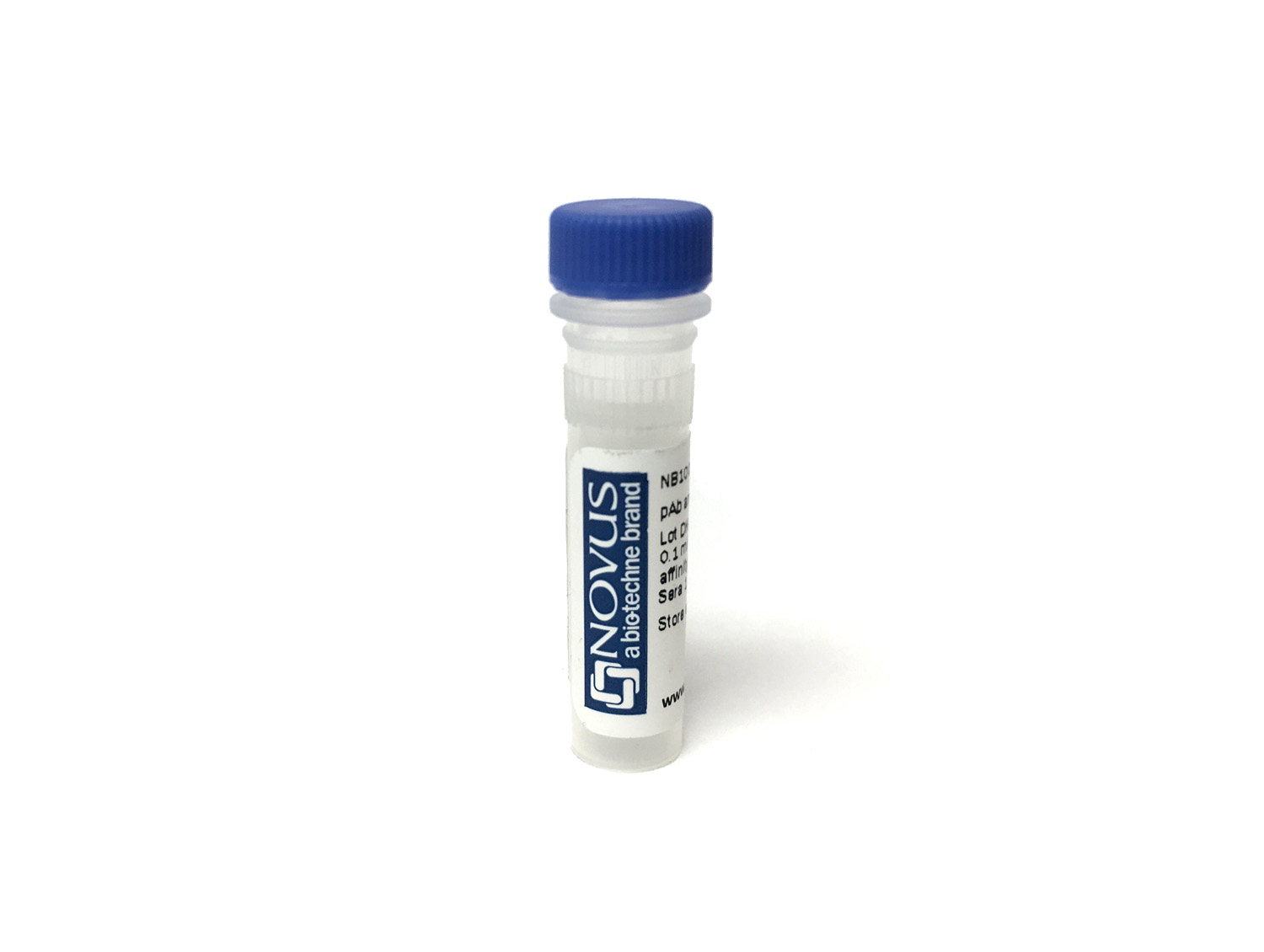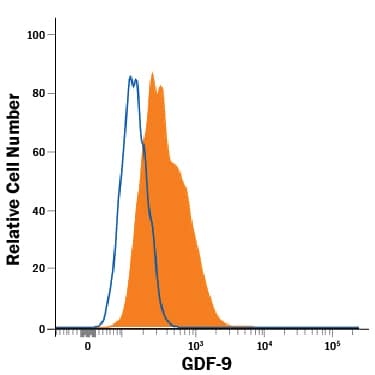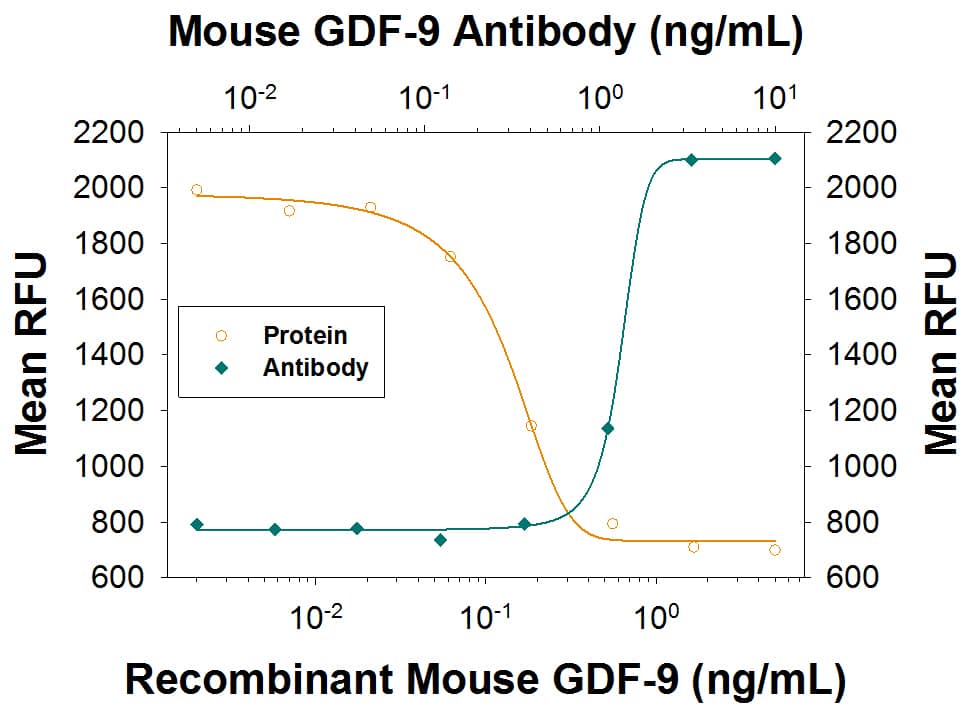GDF-9: Antibodies
Bio-Techne offers high quality GDF-9 antibodies from our Novus Biologicals and R&D Systems brands. Our GDF-9 antibodies have been cited in 3 publications. Browse our catalog for anti-GDF-9 monoclonal, polyclonal, and recombinant monoclonal antibodies. These antibodies are reactive in target species including Human, Mouse, and Hamster. Our GDF-9 antibodies have been validated for use in several research applications: Western Blot, ELISA, Immunohistochemistry, Flow Cytometry, CyTOF-ready, and more. Choose the anti-GDF-9 antibody best suited for your research needs by viewing the technical details, images, citations, reviews, and more. Each GDF-9 antibody is fully covered by Bio-Techne’s 100% guarantee.
Bio-Techne offers a comprehensive range of other GDF-9-related products including GDF-9 ELISA Kits, GDF-9 Proteins and Enzymes, and more.
193 results for "GDF-9 Primary Antibodies" in Products
193 results for "GDF-9 Primary Antibodies" in Products
GDF-9: Antibodies
Bio-Techne offers high quality GDF-9 antibodies from our Novus Biologicals and R&D Systems brands. Our GDF-9 antibodies have been cited in 3 publications. Browse our catalog for anti-GDF-9 monoclonal, polyclonal, and recombinant monoclonal antibodies. These antibodies are reactive in target species including Human, Mouse, and Hamster. Our GDF-9 antibodies have been validated for use in several research applications: Western Blot, ELISA, Immunohistochemistry, Flow Cytometry, CyTOF-ready, and more. Choose the anti-GDF-9 antibody best suited for your research needs by viewing the technical details, images, citations, reviews, and more. Each GDF-9 antibody is fully covered by Bio-Techne’s 100% guarantee.
Bio-Techne offers a comprehensive range of other GDF-9-related products including GDF-9 ELISA Kits, GDF-9 Proteins and Enzymes, and more.
| Reactivity: | Human |
| Details: | Rat IgG1 Monoclonal Clone #GDF9/4262 |
| Applications: | WB, ELISA |
| Reactivity: | Human |
| Details: | Mouse IgG1 Monoclonal Clone #GDF9/4261 |
| Applications: | IHC, WB, ELISA |
| Reactivity: | Human |
| Details: | Mouse IgG1 Monoclonal Clone #GDF9/4261 |
| Applications: | IHC, WB, ELISA |
| Reactivity: | Human |
| Details: | Rat IgG1 Monoclonal Clone #GDF9/4262 |
| Applications: | WB, ELISA |
| Reactivity: | Human |
| Details: | Rat IgG1 Monoclonal Clone #GDF9/4262 |
| Applications: | WB, ELISA |
| Reactivity: | Human |
| Details: | Mouse IgG1 Monoclonal Clone #GDF9/4261 |
| Applications: | IHC, WB, ELISA |
| Reactivity: | Human |
| Details: | Rat IgG1 Monoclonal Clone #GDF9/4262 |
| Applications: | WB, ELISA |
| Reactivity: | Human |
| Details: | Mouse IgG1 Monoclonal Clone #GDF9/4261 |
| Applications: | IHC, WB, ELISA |
| Reactivity: | Human |
| Details: | Rat IgG1 Monoclonal Clone #GDF9/4262 |
| Applications: | WB, ELISA |
| Reactivity: | Human |
| Details: | Mouse IgG1 Monoclonal Clone #GDF9/4261 |
| Applications: | IHC, WB, ELISA |
| Reactivity: | Human |
| Details: | Mouse IgG2b Monoclonal Clone #917319 |
| Applications: | Flow |
| Reactivity: | Human |
| Details: | Mouse IgG2b Monoclonal Clone #917319 |
| Applications: | Flow |
| Reactivity: | Human |
| Details: | Mouse IgG2b Monoclonal Clone #917319 |
| Applications: | Flow |
| Reactivity: | Human |
| Details: | Mouse IgG2b Monoclonal Clone #917319 |
| Applications: | Flow, CyTOF-ready, ICC |
| Reactivity: | Human |
| Details: | Mouse IgG2b Monoclonal Clone #917319 |
| Applications: | Flow |
| Reactivity: | Mouse |
| Details: | Goat IgG Polyclonal |
| Applications: | WB |
| Reactivity: | Mouse |
| Details: | Goat IgG Polyclonal |
| Applications: | WB |
| Reactivity: | Mouse |
| Details: | Rat IgG2a Monoclonal Clone #785123 |
| Applications: | Neut |
| Reactivity: | Human |
| Details: | Mouse IgG2b Monoclonal Clone #917319 |
| Applications: | Flow |
| Reactivity: | Human |
| Details: | Mouse IgG2b Monoclonal Clone #917319 |
| Applications: | Flow |
| Reactivity: | Human |
| Details: | Mouse IgG2b Monoclonal Clone #917319 |
| Applications: | Flow |
| Reactivity: | Mouse |
| Details: | Goat IgG Polyclonal |
| Applications: | WB |
| Reactivity: | Mouse |
| Details: | Goat IgG Polyclonal |
| Applications: | WB |
| Reactivity: | Mouse |
| Details: | Goat IgG Polyclonal |
| Applications: | WB |
| Reactivity: | Mouse |
| Details: | Goat IgG Polyclonal |
| Applications: | WB |


![Immunohistochemistry-Paraffin: GDF-9 Antibody (GDF9/4261) [NBP3-07273] Immunohistochemistry-Paraffin: GDF-9 Antibody (GDF9/4261) [NBP3-07273]](https://resources.bio-techne.com/images/products/GDF-9-Antibody-GDF9-4261-Immunohistochemistry-Paraffin-NBP3-07273-img0001.jpg)
![Immunohistochemistry-Paraffin: GDF-9 Antibody (GDF9/4261) - Azide and BSA Free [NBP3-08362] Immunohistochemistry-Paraffin: GDF-9 Antibody (GDF9/4261) - Azide and BSA Free [NBP3-08362]](https://resources.bio-techne.com/images/products/GDF-9-Antibody-GDF9-4261-Azide-and-BSA-Free-Immunohistochemistry-Paraffin-NBP3-08362-img0001.jpg)
![Product Feature: CoraFluor Probes for TR-FRET GDF-9 Antibody (GDF9/4261) [CoraFluor™ 1]](https://resources.bio-techne.com/images/products/nbp3-08362cl1_mouse-gdf-9-mab-gdf9-4261-corafluor-1-249202516383515.png)
![Product Feature: CoraFluor Probes for TR-FRET GDF-9 Antibody (GDF9/4262) [CoraFluor™ 1]](https://resources.bio-techne.com/images/products/nbp3-08364cl1_rat-gdf-9-mab-gdf9-4262-corafluor-1-249202516402019.png)


